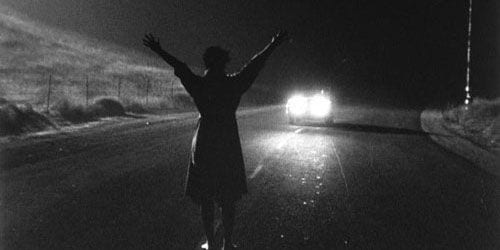
It’s fitting that so many films noir revolve around mystery and ambiguity. One could say those are defining traits of the genre — if one is allowed to call it a genre at all. Film noir is one of those cultural animals that is so self-apparent it almost defies classification. Among film scholars, there is no precise definition of what film noir specifically is, and yet its canon is fairly well agreed-upon. Is it a genre? A cycle? A style? No one can say. Do low-key lighting and terse dialogue automatically make a movie “noir”, or is a chilling story of sex and murder required as well?
The fourth edition of Alain Silver and Elizabeth Ward’s Film Noir: The Encyclopedia may not answer those questions outright, but it gives enough clues to keep us interested. The authors’ opening essay (only lightly revised from Silver and Ward’s 1979 edition) lays out the history and parameters of noir in a succinct but undogmatic way, offering an intro for the new viewer as well as food for thought for the hardboiled fan. Most of the rest of the book consists of synopses of noir films, providing a brief plot summary followed by a paragraph or two detailing key aspects of each film. Important flicks like Kiss Me Deadly and Double Indemnity get a bit more space and consideration, and the authors, for the most part, avoid subjective reviews and concentrate on chasing down each film’s address in the naked city of noir.
It’s a fascinating ride, full of shadowy dames and fedora-topped detectives, searching in the dark for a truth that no longer exists. To immerse oneself in film noir is to feel the desperation of a world gone off the rails, to witness the darkening of the Western soul. That’s primarily because film noir is an expression of a schizoid moment in history, when the end of World War II brought welcome prosperity but brutal cultural upheaval. The films’ main audiences were made up of soldiers returning from Europe and the Pacific, who found their homecomings undercut by changes at home that let them anxious and alienated. Winning the war was the signal accomplishment of their generation, yet it brought an uneasy peace with a side of looming annihilation. Film noir distills that anxiety into an existential cocktail that can still induce the spins, and this encyclopedic text is a great place to start drinking.
I couldn’t find a hardcover third edition of Film Noir to compare the new one to. But up against the well-worn softcover at my local library, the new edition seems vastly superior. The font is easier on the eyes, the photos are more handsomely reproduced and the cumbersome appendices have been either cut or reintegrated into the main text. The films are now indexed alphabetically, chronologically, and by studio. A new section on modern movies displaying noir tendencies has been added under the heading “Neo-Noir,” as opposed the “Classic Noir” of the main section.
Two welcome sidebars have also been added. The first focuses on the German Expressionist roots of noir, and the other is a second-by-second account of a seven-minute-long shot from a film in which Robert Mitchum is suffocated by a femme fatale wielding a throw pillow. Accompanying photos show the techniques noir films use to create tension, while the play-by-play invites readers to match the characters’ psychological expressions with the director’s technological ones.
There will surely be arguments over which films should or shouldn’t have been included in this tome, especially in the Neo-Noir category. I personally wondered about the exclusion of The Big Lebowski in that section — is the Coens’ tongue-in-cheek homage to noir somehow not noir enough? (Blood Simple and No Country for Old Men are both represented.) What about The Manchurian Candidate, which is missing from the classics section? Seems plenty noir to me, but apparently not enough for the editors. But of course there are at least dozens, and perhaps hundreds, of movies that didn’t make the cut. Arguing about what constitutes a noir film is part of the fun, after all.
Noir as an art form seemed to evaporate the instant it became conscious of itself. TV noir took its place for a while, just long enough for postwar audiences to settle comfortably into their new lives. The hard alleys of the city gave way to the manicured cul de sacs of the suburbs, and color features swept noir’s wonderfully duplicitous, black and white shadows from the silver screen. There were revivals and re-creations, but true noir died around 1958. Yet the sentiments and fears expressed through noir films never really went away — they just crawled onto celluloid to sleep their big sleep. This new edition of the definitive text on film noir is a perfect companion for a foray into the dreamlike world of some of the most dark and mesmerizing movies ever made.

![Call for Papers: All Things Reconsidered [MUSIC] May-August 2024](https://www.popmatters.com/wp-content/uploads/2024/04/all-things-reconsidered-call-music-may-2024-720x380.jpg)



